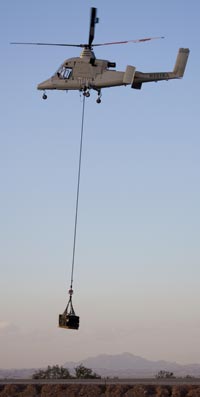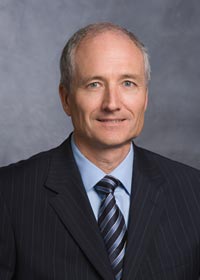Kaman has risen five places to number 83 in our Top 100 after a year in which it won a five-year contract to build composite blade skins and core assemblies for Bell Helicopter.
By the terms of a deal it values at $53 million, Kaman was enlisted to manufacture 18 different assemblies for Bell's H1, 406, 407, 412, 427, 429, 430 and BA609 rotorcraft. The work was assigned to Kaman's HeliworX plant in Bloomfield, Connecticut, which also serves Boeing, Northrop Grumman and Sikorsky.
|
|---|
In 2008, Boeing awarded Kaman a contract to make wing components and assemblies for the US Air Force's Fairchild A-10 attack jets. The inboard and outboard flaps, slats and deceleron assemblies are manufactured at Kaman's Jacksonville, Florida facility, while bonding work is carried out at HeliworX and tooling fixtures produced by Brookhouse, a UK company Kaman acquired in 2008.
Founded in 1945, Kaman has two arms to its business: industrial distribution and aerospace, which accounts for 43.7% of the total. In 2009 Kaman's aerospace revenues grew 5% to $501 million. In addition to manufacturing metallic and composite aerostructures, the aerospace division markets and supports the SH-2G naval and K-Max commercial helicopters. It also produces military safe-and-arm devices.
While Kaman admits economic conditions necessitated "painful but necessary expense and staff reductions", its military business as a whole grew 11.8% last year to represent nearly 70% of the aerospace division's sales. This overwhelmed a decline of roughly 8% in commercial aerospace sales, although Kaman cites the Boeing 787, Airbus A350 and Airbus A380 commercial types alongside the Joint Strike Fighter as ramping-up programmes in which it is a participant.
Production of Black Hawk cockpits for Sikorsky "dramatically ramped up" in 2009, says Kaman, which also began deliveries of 10 SH-2G(E) helicopters it is upgrading for the Egyptian air force. But it had to deal with fall-out from Australia's Kaman SH-2G(A) Super Seasprite naval helicopter programme, which was terminated in 2008.
|
|---|
As it strives to sustain last year's growth, Kaman is pursuing the unmanned sector. In January, a project team comprising Kaman and Lockheed Martin demonstrated the unmanned K-Max helicopter to the US Marine Corps. The demonstration was to show the K-Max's ability to resupply troops at forward operating bases in Afghanistan.
- Top 100 rank 83
- HQ Bloomfield, Connecticut, USA
- Aero revenues $501m
- Sales growth 5%
- Operating margin 4.7%
- ROCE 8.7%
- Employees 4,032
- CEO Neal Keating
Source: Flight International





















